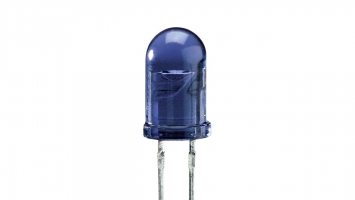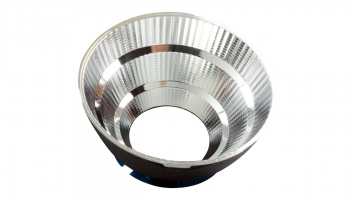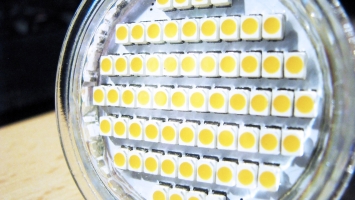
Lens is an optical material that controls the light emitted from a light source and allows it to distribute in a certain angle and density. Lenses provide precision control over light angle.
Lenses can be made of plastic, silicon or glass material in various shapes and sizes. It can be designed to use with one LED or with a LED arrays.
The dome placed on a LED is called primary optical material. Primary optic is attached to LED. The light emitted from this dome, which is attached to the LED, is usually emitted at wide angle. The light emitted with wide angle disappears before it reaches the surface to illuminate at far distances. This will cause the necessity of secondary optic usage in LED lighting.
LEDs are multidirectional light sources and can emit the light maximum angle of 180 degrees. Typical LED packages that combined with primary optical material generally have about 120 degrees light angle. However, 120 degrees light angle is not suitable for many applications.
Lenses are secondary optical materials that collect light and transport it to the surface to be illuminated. Lenses collect the light and transport it to the surface to be illuminated with controlled angle.
Lenses distribute light on the vertical and horizontal axis. If each two-axis has the same light angle, this type of lenses is called symmetrical lenses. If vertical light angle is different from horizontal light angle, this type of lenses is called asymmetrical lenses. Asymmetrical lenses used in indoor and outdoor lighting where light is needed in a particular direction.
Asymmetrical lenses should be used for illuminate the road surface in street lighting with LED light sources. For example, an asymmetric lens with 60*150 degrees means that the light distributed with 60 degrees of angle through the road width and 150 degrees of angle through the road length. By this way, bright spots and dark spots are prevented under the poles and between the poles. Therefore, homogeneous lighting can be obtained.
Lenses can be mounted to LED by screw, glue or connecting tab. Also, it can be mounted to printed wiring board or can be attached to a housing.
The efficiency value should be considered when choosing lens. This value must be as high as it can. Because this value which expressed as percental indicate how much light can go out of the lens.
In lighting applications, lens selection should be made according to project requirements. As secondary optical, reflector can be used instead of the lens. The main difference and advantage of lenses from reflectors are that lenses can hide the light source and by this way, it reduces the glare.







COMMENTS
MAKE A COMMENT